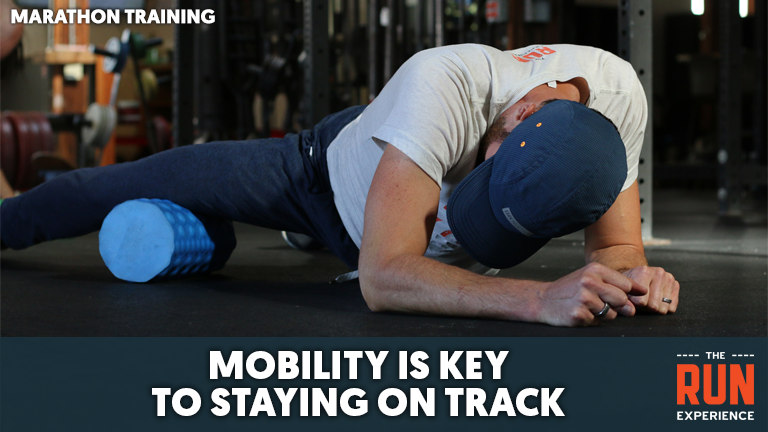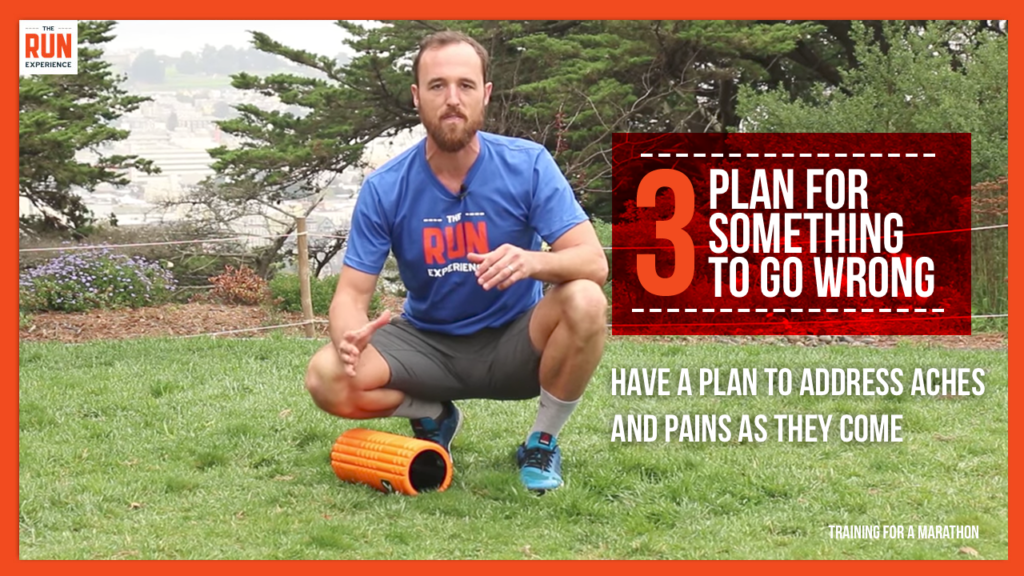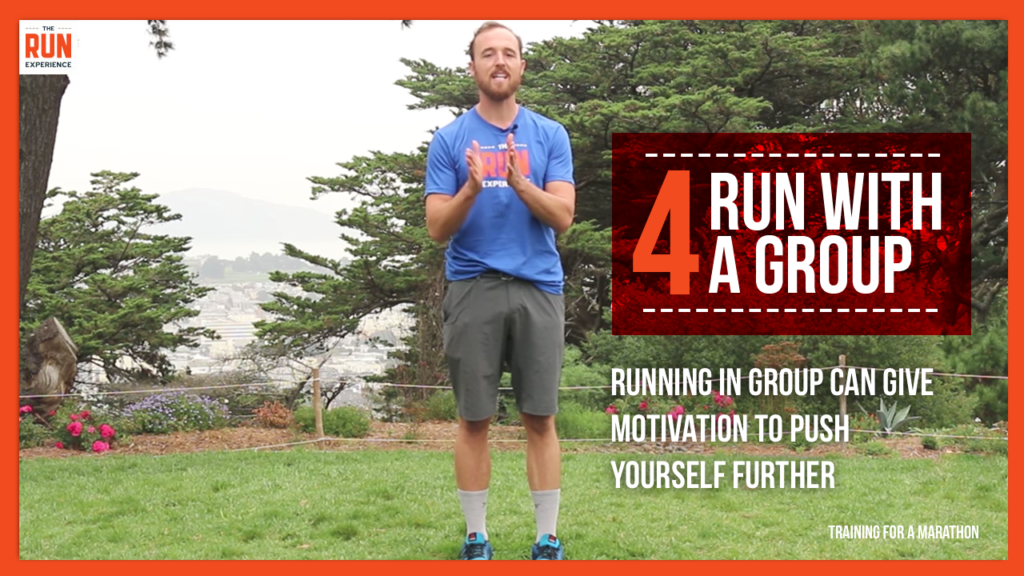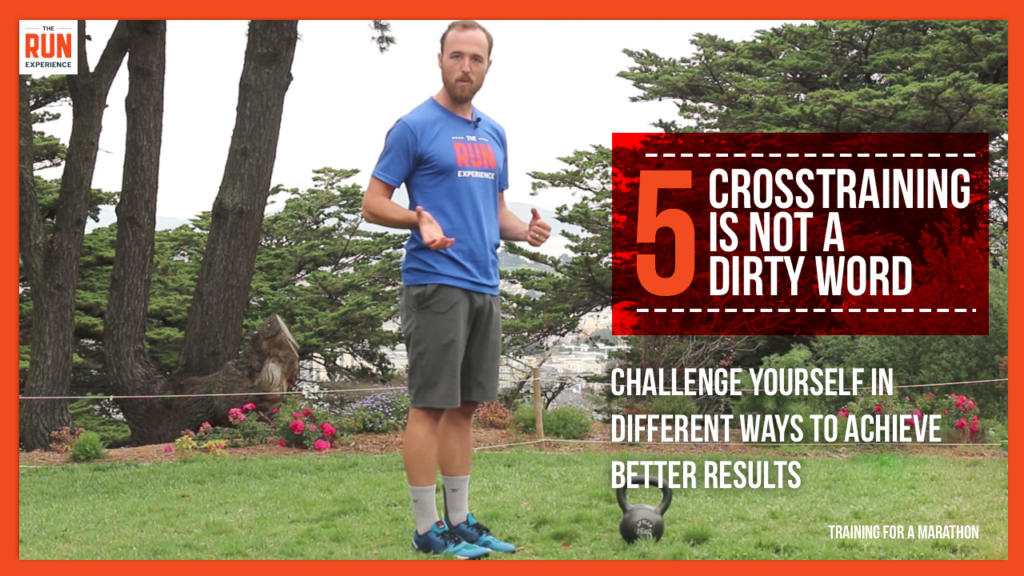How to Train for a Marathon: Best Tips and Training Plans

Marathon training is a big undertaking; there is no question about that. But what if we told you marathon training did not have to be such a daunting idea? In fact, if you plan ahead, find a solid marathon training plan, and stick to that plan, gradual improvements will allow you to be ready by race day with minimal stress.
The marathon, an awe-inspiring feat of 26.2 miles, stands as one of the most iconic challenges in the world of athletics. It's not just a test of physical endurance but also a testament to the indomitable spirit of the human will.
From ancient tales of Pheidippides to modern-day urban marathons with thousands pounding the pavements, this race has captured the imaginations of many.
Whether you're a seasoned runner looking to tackle the marathon for the first time or a novice intrigued by the lure of the long distance, embarking on the journey to conquer such a race requires dedication, resilience, and a foolproof training plan.
n this article, we will traverse the winding roads of marathon preparation, offering time-tested tips and tailored training blueprints that can pave the way for your marathon success.
How Long Does It Take to Train for a Marathon?
The first question many people ask is: “how long does it take to train for a marathon?” The magic answer is…well, it depends.
How to train for a marathon depends on your running experience and current base training. While it might take an elite runner a couple of weeks to refocus their training and get in tip-top shape for a marathon, it might take a couch to marathoner months.
Below, we’ll walk you through everything you need to know about how to train for a marathon, whether you’re a complete beginner or a veteran of the sport.
How to Train for a Marathon Based On Running Experience
In this article, we’re diving into how long it takes to train for a marathon given your running experience: from beginners to vets. Let’s dive in!
I’m a brand-new beginning runner.
If you are brand new to running and to working out in general, a marathon is still completely doable. In fact, it’s a great goal to kickstart your fitness journey. Figuring out how to train for a marathon will be your first big hurdle. Luckily, we’ve got you covered.
As a general rule, beginning runners should give themselves at least 5-6 months to train for a full marathon. After all, you don’t just want to finish your first marathon.
You want to finish your race feeling strong and injury-free. If you are looking to make long-distance running a habit, you’ll want to create a good memory out of your first marathon.
This is why we suggest at least 5-6 months of training beforehand. And you will want to find a marathon training plan. Let your plan do the heavy lifting in your marathon training – all you should have to do is show up every day and do what the plan says. And don’t worry, at least once a week, the plan will say to rest.
Your Main Goals:
- Acquire sufficient physical fitness to finish the race
- Learn and practice proper running form
- Build the endurance and mental toughness required to run such a long distance
If it is your first time running, find a plan that starts with short distances at a slow tempo, utilizing the run-walk method. This method allows you to combine running and walking in intervals.
Maybe for your first run you’ll run for 30 seconds, and walk for one minute, repeating that pattern for 20 minutes. From there, you can eventually bump that up to running for one minute, and walking for 30 seconds, or some variation of that. This way, you are learning proper running form while incrementally increasing your fitness level.
Over the next 5-6 months, your will gradually increase distance and speed. When searching for the proper marathon training plan, make sure your training plan has variety.

For many beginner runners, it helps to find a training partner, or to join a running group, either in person or online. Telling someone about your training helps you to stay accountable, as does having someone to train with. Consider asking a friend if they want to get fit and train with you!
Each week, you (and your partner) will incorporate a long distance run, some speed work, 1-2 days of strength training, and plenty of mobility every single day. If mobility is new to you, check out this video on foam rolling basics for beginners.
Hopefully, you’ll find the training plan that works perfectly for you. However, if you don’t, just remember that these plans can easily be modified and customized to your needs.
For example, if you are aiming for a particular marathon time, adjust your plan accordingly if necessary. Especially as you get closer to race day, adjust your training paces so that they reflect your desired race time.
I am active, but running has never been my thing.
For those who work out regularly or even semi-regularly, give yourself 3-4 months to train for a full marathon. Your overall fitness will certainly help you cross that finish line, but running requires a particular skillset that is best built gradually.
For this reason, give yourself about a month to get ready for your marathon distance run. Here at The Run Experience, we always recommend following a training plan, no matter your fitness level.
A training program will take care of determining things like weekly mileage, weekly number of training runs, when your rest days are, and other things like that.
The less planning and stressing you have to do, the easier your training will be. It’s that simple. So let your training plan take care of that and be your running coach; you just have to be the athlete.
The biggest challenge of your marathon training is going to be running on some of the days when you would normally do a different work out. Or perhaps, given your current workout schedule, your biggest challenge might be fewer rest days than you’re used to.
Again, this is why we recommend a training plan so that your runs are like any other calendared appointment.

Your Main Goals:
- Learn and practice proper running form
- Build the endurance and mental toughness required to run such a long distance
If you are already working out regularly, you do not need to switch up your routine entirely. Find a marathon training program that incorporates cross-training, and use those days for your normal workout method.
Your marathon training requires you to build both the particular muscle memory associated with running, and the endurance a marathon requires. If you give yourself enough time to build these things gradually, your body will thank you on and after race day.
A major benefit of starting your marathon training early is that you will be less prone to injury. This is because you’ll have time to incorporate easy run days and recovery days. Not only will these minimize overall soreness during training, but they will make your tempo and long distance runs that much stronger.
I already run, and I’ve even done a half marathon, but I’ve never run a full marathon.
The only difference between “marathoners” and “recreational runners” who have never done a marathon: marathon preparation. Longer distances simply require more preparation so that you can teach your body how to calm down and support you, even at mile 25.
If you are changing your race distance to become a marathoner, give yourself 2-3 months to get marathon-ready. Your run form is likely in good shape, but finding and maintaining marathon pace over such a long distance is a tall order.
Allow yourself enough time to properly train and comfortably switch your distance, so that your body doesn’t try to fight back against the sudden added mileage.
Your Main Goal:
- Build marathon-level endurance and mental toughness
It is important to note that some of your training runs are going to be longer than anything you’ve done before. These longer runs beat the body up. In fact, when it comes to marathon training, one of the biggest hurdles is actually just making it to the starting line.

This means your mobility and recovery practices are even more important. If you already follow running training plans, just be sure you really stick to your marathon plan.
If training plans are a new concept for you, we cannot recommend them enough. Maybe you used to be able to get away with not using your foam roller, or with skipping your cool down, at shorter distances. When it comes to marathon distance training, that is no longer the case, and a training program will hold you accountable for things like that.
How to Train for a Marathon—TRE Style
Like we just mentioned, training plans are where it’s at to reach your goal, no matter your experience level. New runners benefit from the guidance to train safely and efficiently, and experienced runners can use a training schedule to get out of a rut or to strive for a new distance.
There are also some things that every runner should do, no matter their level, such as strength training, speedwork, and mobility training. Finding a pair of shoes that you love and testing a fueling strategy for your long runs are other universal needs of marathon runners.
Running a marathon will take time and dedication, so let’s check out the best way to get started.
The First Week of Marathon Training
Our training week is more than just running. To stay strong enough to handle the miles and avoid overuse injuries, our week has 3-4 running days, two strength training days, and a daily dose of mobility work. It might seem like a lot to fit into a seven day period, but with smart planning, it’s not too overwhelming.
Keep in mind that this training week represents the intermediate level. If you’re just starting out, don’t skip that base-building phase to improve your fitness level. In that phase you could still follow the same structure within your week, just modify the miles and volume of the runs and strength workouts to what feels manageable for you.

Day 1: Core Work and Restoration
- Warm Up: two rounds of:
- 30 jumping jacks + 5 plank walkouts
- 10 squats with a 2-second pause at the bottom + 5 pushups
- 20 leg swings + 10 lunges per side
- repeat for 2 total rounds
- Mainset:
- 3 rounds: 30″ single-arm planks (alternate arms slowly side to side) + 10 V up/tuck up variations
- 3 rounds: 20″ side planks (each side) + 10 happy stars
- 3 rounds: 5-10 downward dog pushups + 10 lateral leg raises “windshield wipers”
- Mobility:
- Chest stretch (on belly). ~2 minutes per side
- Upward dog + downward dog flow ~5-10 reps (or 2 minutes)
- Anterior + posterior banded hip stretch. ~2 minutes per side in each direction
Day 2: Posture, Breathing, and Pulling Drills
- Warm Up:
- 10 deep belly breaths
- 5-minute easy run to get your heart rate going
- Bend & Touch: stop running and continue to warm up with a bend over and touch and reach back.
- Side Bend: side to side bend.
- Hips: follow with 5 high kick + lateral lunges in each direction.
- Drills:
- Leg swing + Pull: this drill involves a standing leg swing + Pull. 10 each side.
- Pulling: 5 rounds: 30 meters run, pull 10 times on the right, pull 10 times on the left.
- As you pull your leg up, focus on being as tall and relaxed as possible. The taller and more relaxed the easier it is to pull!
- Run:
- Run the remainder of the time at a steady to moderate pace. Every 5 minutes include 10 quick pulls on each side.
- Cool Down & Mobility:
- 3 minutes of easy running
- 2 minutes of couch stretch per leg
Day 3: Strength and Cross-Training
- Warm Up:
- 3 rounds: 10″ jogging in place, 10″ of high knees, 10″ of butt kicks, and 10″ of rest
- 3 rounds: lateral lunge and hip circles
- 2 rounds: 10 opposite arm circles each way and 3 shoulder rotation (with hand against the wall)
- Main Set:
- 3 rounds: 10 meters of walking lunges and forwards bear crawl
- 3 rounds: 10 meters of inchworms and backward bear crawl
- 3 rounds: 10 single leg burpees (5 L, 5 R) and 10 step ups per leg. Choose height on ability.
- 3 rounds: 10 shoulder touch push ups (touch, touch, pushup) and 10 box or bench jumps. Choose height on ability.
- Mobility:
- 5 minutes quad rolling & smashing
- 5 minutes thoracic spine (upper back) and shoulder work
Day 4: Hill Intervals
- Warm Up:
- 10 deep belly breaths
- 10 minute run progressing from easy to moderate effort
- 1 round: 10 sprawls, 10 squats, 10 hip circles per leg, 10 elbow touches per side, 10 forward/backward arm swings
- Run:
- 5-7 rounds: 60-second hill interval. Rest 1-2 minutes in between.
- *Use a “runnable” hill, nothing that’s over 5% incline.
- Options: continue up the hill & slow jog back down to the start, or use a treadmill indoors
- Cool Down & Mobility:
- 3 minutes easy run/walk cool down
- 2 minutes of rolling with a ball, per foot
Day 5: Rest and Mobility
- Today is a recovery and restorative day. The goal is to give you the mental and physical break you need to not only absorb all the hard training you’ve done this week but to feel rested and refreshed and ready to tackle this weekend’s long run and fun run.
- Feel free to spend time on your problem areas, i.e. roll out your quads and do the couch stretch if you’re dealing with tight hips and knee issues! You can use the mobility you’ve seen here, or don’t forget about the Injury Prevention Series in the app!
Day 6: Long Run
- Warm Up:
- 10 minutes of a breath-focused run
- One round of leg swings, lunges, and hip circles
- One round of inchworm push ups
- Run:
- 5-7 mile run with optional walk breaks
- Cooldown & Mobility:
- 3 minutes of easy jogging and walking.
- Mobility area of choice.
- Repeat a previous mobility drill and spend at least 2-3 minutes per side where applicable.
Day 7: Fun Run and Recovery Cross-Training
- Optional Run
- 20-60+ minutes. A great way to get extra mileage for the week provided your body is ready to handle those miles and you have race goals that require them!
- You can also just spend some time outside moving around. Kick around a soccer ball, take a walk on the beach, or roughhouse with your kids. Just have fun and move around a little!
Round Out Your Training
Once you’ve got your schedule worked out, there are a few more things you’ll need to consider. Beyond just the training, you’ll also need to dial in your nutrition, your gear, and your race day prep.
Running shoes
Chances are you’ve already found a pair of running shoes that work for you if you’re ready to train for a marathon. But if that’s not you, then we’ve got you covered. There are endless models of shoes to choose from, but three main categories are stability shoes, highly cushioned shoes, or minimalist shoes. Each runner has to find what works best for them, and some runners even rotate between various styles and pairs depending on the day’s workout.
Fueling
As your runs get longer and the weeks of training build-up, you’ll need to find what sort of nutrition and fueling works best for you. In this case, we aren’t talking about your daily eating habits, such as whether you start your day with peanut butter toast or just a cup of coffee.
Rather, once you start spending more than an hour at a time running, you have to start bringing calories on board to fuel your body throughout the run. Specifically, your body needs carbohydrates, aka glycogen, to go those longer distances. Some runners consistently reach for chews and energy gels, as they’re easily digestible and highly portable. Other runners prefer to stick with real food such as bananas, boiled potatoes, or dates. Still others stick to a sports drink in their water bottles to hit the right balance of fuel. Just like your shoes, it takes a lot of trial and error to figure out the right nutrition strategy for you. Heck, you might even be like some pro runners and rely on tubs of frosting to get the job done.
For even more fueling tips, check out this article How To Perfect Your Marathon Training Diet, and get suggestions on how to eat up for each run.
Race day readiness
Being ready for the start line begins well before race day itself. The biggest part of your prep is of course your training plan. Figuring out how to tailor your schedule to fit around your lifestyle, how long your longest run will be, and when to start tapering are all hugely important. But, there are some other factors that you should also keep in mind.
For example, depending on the race you sign up for, make sure you’re able to train in a similar environment. If your race will be in the heat of summer, take advantage of warm days to get in a run. If you choose a speedy downhill course, strategic strength training will help prepare your quads and ankles for a beating. Sometimes you have to get creative to replicate your rae situation. Here’s how you can prep for a hilly race, even if you don’t live in a particularly hilly area: Marathon Running For Hill Lovers, Even When You Live In Flatland.
You can train mental toughness just like you train your legs. Using a mantra to get you through the tough workouts is great practice for race day when you’re striving to perform your best. Speed workouts are usually pretty uncomfortable, so they’re another great opportunity to practice keeping your cool when your brain and your heart rate is telling you to stop and take a break.
5 Essential Marathon Training Tips
1. Up Your Fitness

A regular 16 or 20 week marathon running plan is not much time to build up the strength and distance required for a marathon. There are a few details that will help to work out before you even get to week one. Don’t forget to take some time to get into training mode before you start.
- Dial-in your basic schedule for the week. Which days will you do speed work, cross training, preparing for the long distance running, or technique drills? Get yourself into a roughly regimented routine. For example, you might do a shorter steady state run on Monday, rest on Tuesday, do a tempo run or hill repeats on Wednesday, cross-train on Thursday, rest on Friday, and do your long run Saturday, with an easy shake-out jog on Sunday.
- Find which combo of shoes and clothing work for you. What you are most comfortable wearing? Leggings? Shorts? Heavy trainers or a more lightweight shoe?
- Find those hot spots. Do you find after a few regular runs that you have aches in your Achilles? Cramps in those quads? Pain in your knees? Knowing which areas need a little TLC before you start piling on the miles puts you ahead of the curve in keeping injury at bay. For help, check out our Injury Prevention Series.
2. Distribute Mileage Throughout the Week

A regular 16 or 20 week marathon running plan is not much time to build up the strength and distance required for a marathon. There are a few details that will help to work out before you even get to week one. Don’t forget to take some time to get into training mode before you start.
- Dial-in your basic schedule for the week. Which days will you do speed work, cross training, preparing for the long distance running, or technique drills? Get yourself into a roughly regimented routine. For example, you might do a shorter steady state run on Monday, rest on Tuesday, do a tempo run or hill repeats on Wednesday, cross-train on Thursday, rest on Friday, and do your long run Saturday, with an easy shake-out jog on Sunday.
- Find which combo of shoes and clothing work for you. What you are most comfortable wearing? Leggings? Shorts? Heavy trainers or a more lightweight shoe?
- Find those hot spots. Do you find after a few regular runs that you have aches in your Achilles? Cramps in those quads? Pain in your knees? Knowing which areas need a little TLC before you start piling on the miles puts you ahead of the curve in keeping injury at bay. For help, check out our Injury Prevention Series.
3. Plan for Something to Go Wrong

While 20 weeks is a short time to prep for a marathon, it’s still 20 weeks of time that your training can get derailed during. Build mobility and injury prevention into your plan from the beginning. This will help you get back on track faster if and when the unexpected strikes.
- Spend two to five minutes of focused time foam rolling each tight spot. Quads, Achilles, and calves are all common problem areas for runners.
- Do mobility work a minimum of two to three days per week, no matter what.
- Complete mobility work daily on hot spots. Areas of soreness or any regular knots need to be addressed daily. Your consistency will pay off with quality, pain-free training!
4. Run With a Group

Running buddies can help hold you accountable, prevent burnout over so many miles and generally keep you motivated to improve. The key is to mix it up and find people that can both push you harder as well as keep you in check on the long run. Those might not always be the same people.
- Run with someone faster than you. Every once in a while, get out of your comfort zone and chase your speedy friends. Avoid doing this for every run as it can grind you up and cause injury.
- Run with someone slower than you. Especially during the long run, it’ll keep you from taking off too fast. Ideally, your long-run pace allows you to speak comfortably in full sentences.
- Run with those that keep you motivated. New people bring new workout ideas, new routes, and freshness to your runs. Plus, you will probably end up making new friends outside of your running life!
5. Cross Train

Cross-training is not a dirty word! Exploring a full range of motion is imperative to strong running. Don’t limit yourself to just one activity. Your options could include biking, swimming, group sports, swimming, and strength training. Or just get out and play! Play a game of tag or dodgeball with your kids, go roller skating, pick up a hula hoop, or jump on a trampoline.
- Take your body through a full range of motion. A well-rounded athlete will have an easier time trying new exercises designed to improve running form and efficiency.
- Challenge your midline stability. Core strength is essential to proper running form.
- Teach yourself a new set of skills. Enhanced balance, coordination, and strength come from trying something different and asking more from your body.
Keep these marathon training tips in mind and you’ll no doubt be in good shape to get out there and earn your miles!
Frequently Asked Questions (FAQs) About Marathon Training
How long is a marathon?
Oh, easy. Good one to start with. A marathon is 26.2 miles or 42.19 kilometers. Why? Well, that’s a long story.
When should I start training for a marathon?
As soon as possible. Chances are, you’ve started training for a marathon without even realizing it. All the running and training you’ve ever done contributes to your base fitness—and this is the key component to your marathon training.
Training involves focused workouts, optimized training plans, and intentional rest days. In that sense, you should start training for a marathon now to give focus and structure to your running.
How to get ready for a marathon?
Commit. Anyone can run a marathon. You just need the commitment, training, and know-how. Marathon training isn’t just getting out and putting the miles on your legs. No, it involves:
- Structured training
- Intentional rest days
- Cross-training
- Dieting
- Stretching and foam-rolling recovery
- etc.
How to train for a marathon in a year?
Be slow and intentional about your training. If you’re planning on racing a marathon in a year, then build up your base fitness and focus on recovery—you have to show up on the start line to run a marathon.
You have 52 weeks to train, so take it nice and slow. Don’t be afraid to take consecutive rest days, and make cross-training a priority.
How to train for a marathon in a month?
A month isn’t a lot of time to train for a marathon, especially if you’re training as a beginner from scratch. If you’re completely new to running, then there’s a chance you could train for a marathon in a month, but there’s no promise you’ll quickly recover from the new trauma on your body after finishing the race.
If you’ve already been running for some time, then it’s completely possible to get in marathon shape in just a month. First, don’t change anything. With just 4 weeks to go, you’re not going to gain any new incredible endurance.
Instead, the focus for how to train for a marathon in a month is just to show up healthy at the start line. Start tapering your training to give your legs more of a rest.
How long does it take to get used to running?
How long it takes to get used to running all depends on the individual. If you have a high amount of healthy base fitness, then it’ll take little-to-no time. If you have a higher fitness mountain to climb, it’s going to take longer.
Don’t set arbitrary deadlines for yourself. Enjoy the process. If you fell in love with running overnight, it would diminish the joy and accomplishment of overcoming the challenge.
Start Training for a Marathon Now
Runners of all levels can successfully cross that marathon finish line.
It’s less about how long you take to train for a marathon and more about the nitty-gritty training plans and details.
Now that you know how to train for a marathon, it’s time to put your new-found knowledge to the test—sign up for a race! Target a race that’ll excite you, whether that’s 8 weeks, 16 weeks, or 52 weeks away. Next, sign up.
Now, it’s time to start training for a marathon.
If you’re ready to start, be sure to download our app and explore our full marathon training program. 16 weeks of training are all programmed for you with the perfect balance of miles, strength, run drills, and mobility to give you the prep you need to show up healthy and prepared on race day. If you need some base-building training first, check out the 30-Day Challenge to get you ready.
You can do this! Just be sure to give yourself adequate prep time, stick to your training plan, and enjoy the ride!

